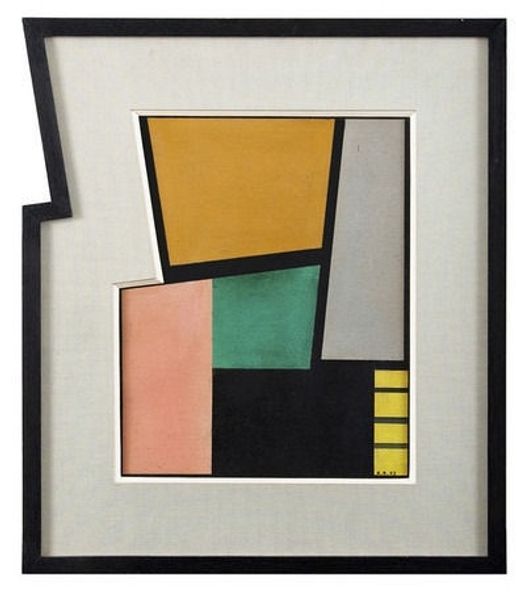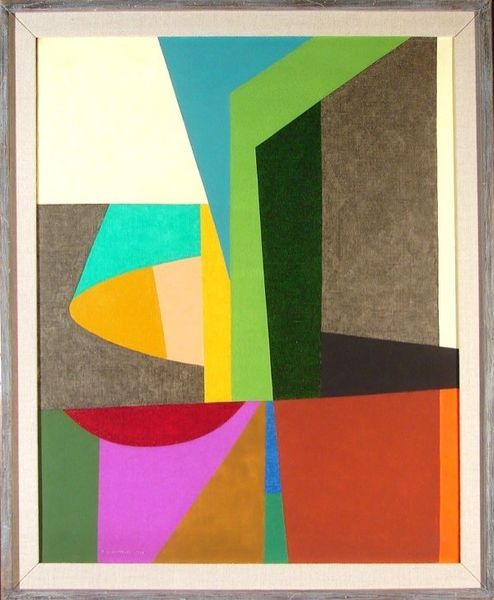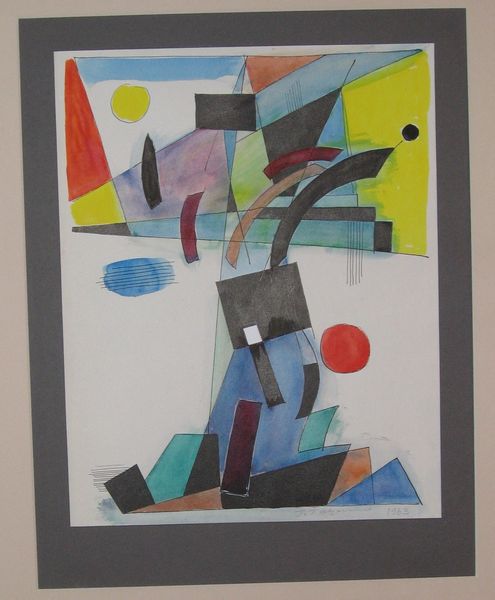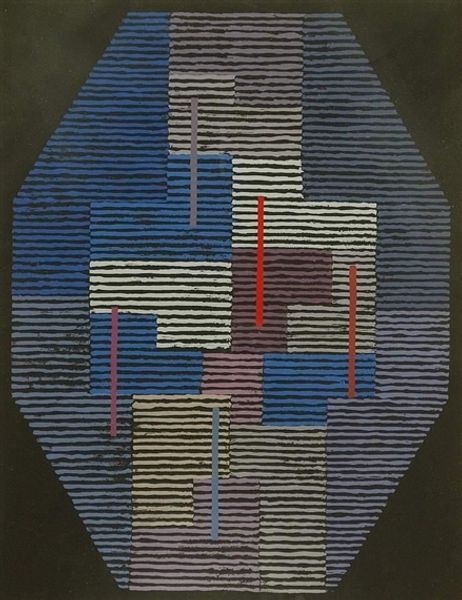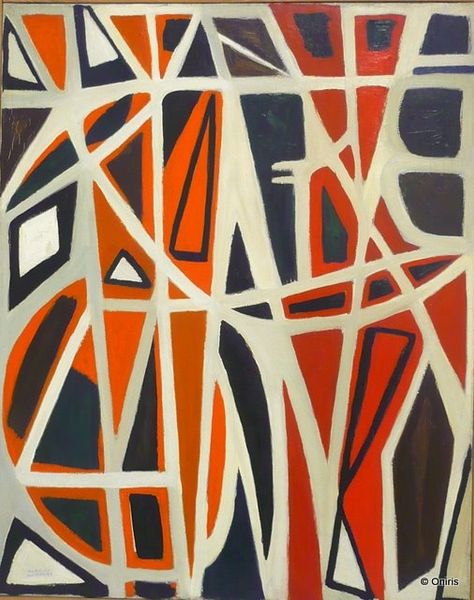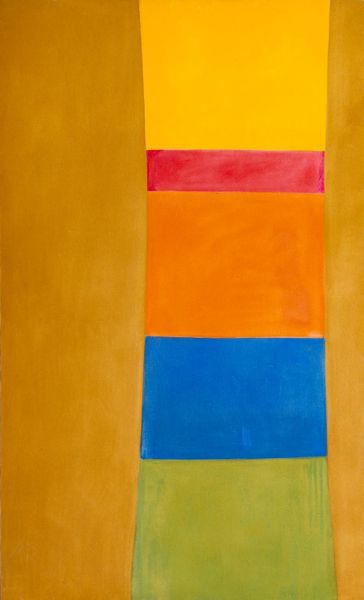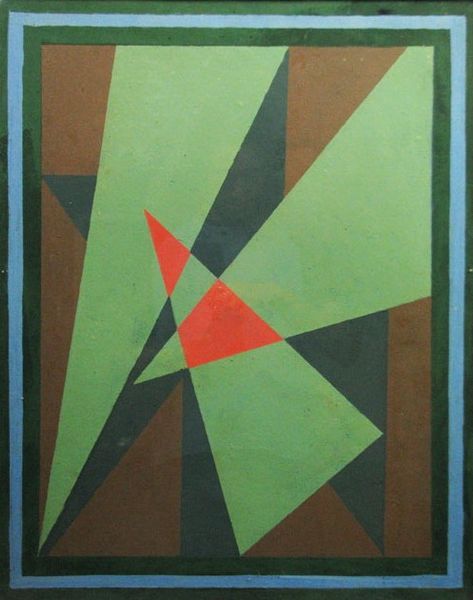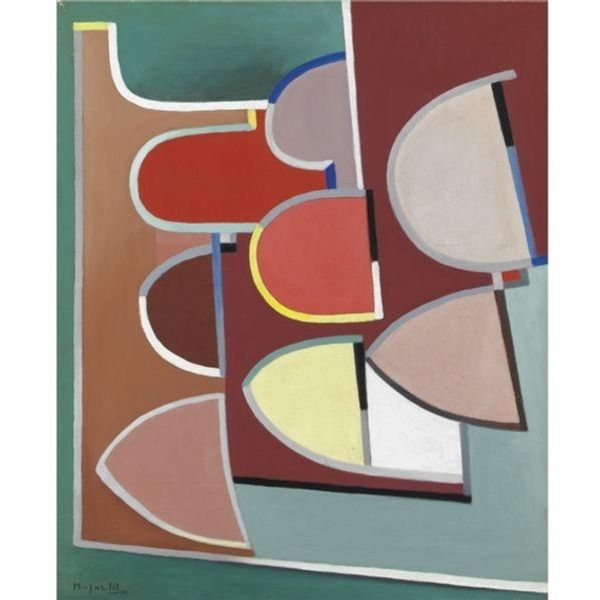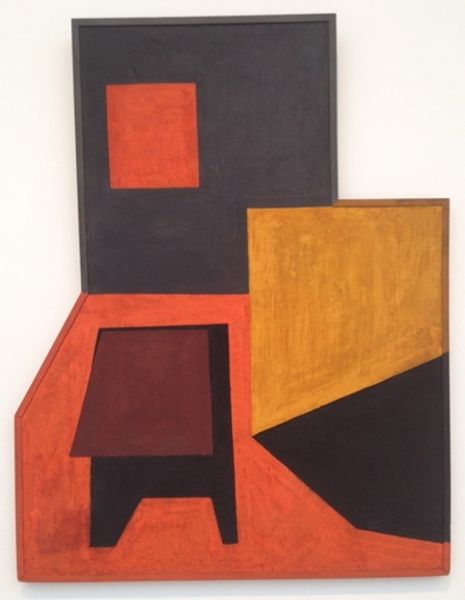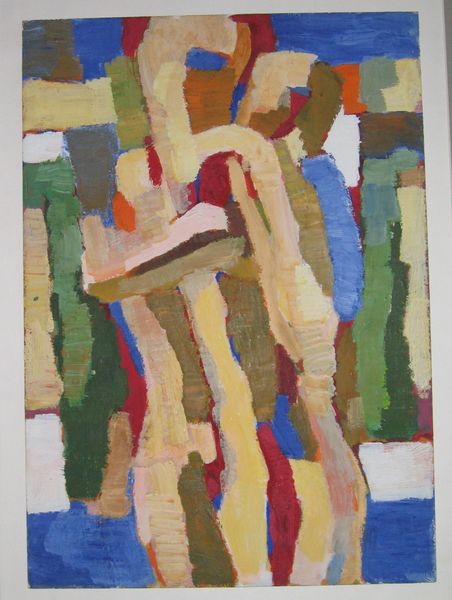
acrylic-paint
#
abstract painting
#
acrylic-paint
#
oil painting
#
geometric
#
abstraction
#
modernism
#
watercolor
Copyright: Gunther Gerzso,Fair Use
Curator: Gunther Gerzso’s “Aphrodite," a powerful abstract painting, pulls us in, doesn't it? What are your initial thoughts looking at this work? Editor: The title intrigues me. There’s a subtle nod to the classical nude, abstracted down to almost architectural planes. It evokes a fragmented goddess. Do you agree? Curator: Absolutely, and Gerzso was so good at that dance between representation and pure form! For me, it's the colour choices that truly sing – that muted, fleshy pink against the geometric rigidity surrounding it… it’s unexpectedly human. It disrupts. Editor: That's precisely where I see the activism inherent in its abstraction. He's dismantling the male gaze traditionally associated with the Aphrodite myth. Stripping her down, refusing objectification. It feels like a commentary on the constraints placed upon female bodies throughout art history. Curator: Oh, I like that. It is a constraint in itself, and I think that idea feeds into that tension between those blocks in the background pressing on that sort of fleshy center… It's interesting to me how Gerzso wasn’t interested in the narrative when he's building these planes to form his own language. It's like we are creating stories as a culture. Editor: He provides the vocabulary but asks us to construct the sentence. And perhaps, within that sentence, we find a reclaiming of power. By deconstructing Aphrodite, he’s offering her—offering us—liberation from the traditional, often limiting, narrative. Curator: Yes, you're right; in this form, this work of art stands out. So powerful; it is quite stunning, really! Editor: Exactly. And the discussion itself shows us the layers upon layers of ways to unpack art through the ages. Thank you for sharing.
Comments
No comments
Be the first to comment and join the conversation on the ultimate creative platform.
